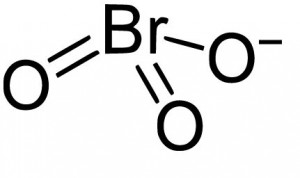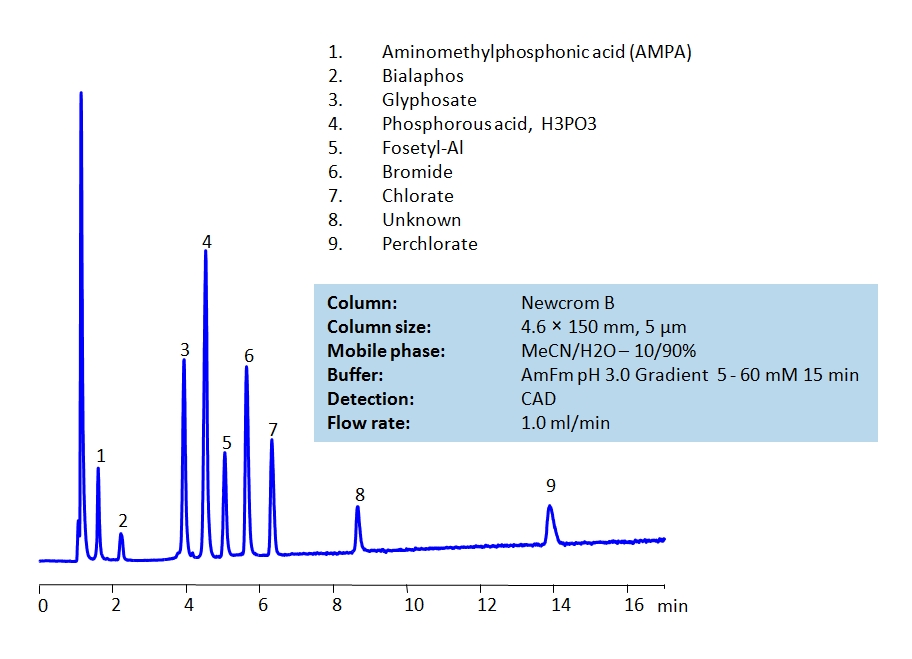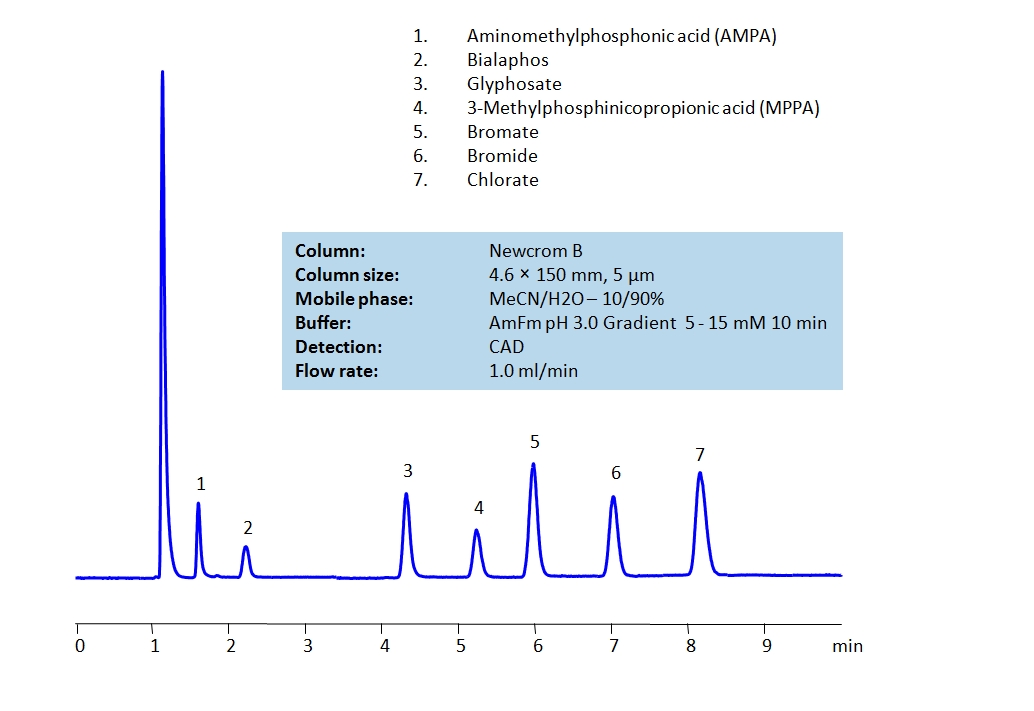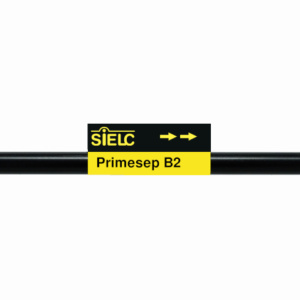| CAS Number | 15541-45-4 |
|---|---|
| Molecular Formula | BrO3 |
| Molecular Weight | 127.902 |
| InChI Key | SXDBWCPKPHAZSM-UHFFFAOYSA-M |
| LogP | -4.63 |
| Synonyms |
|
Applications:
HPLC Separation of Polar Pesticides on Newcrom B Column
November 19, 2020
Pesticide is a more generic term that includes herbicides, fungicides and insecticides in its definition. Herbicides are used to control unwanted plants, they are also known as weedkillers. Insecticides are used to kill insects. Fungicides are used to kill parasitic fungi. All are heavily used in agriculture. By using HPLC, many different pesticides can be separated and their retention characteristics controlled using the Newcrom B mixed-mode column.
| Column | Newcrom B, 4.6×150 mm, 5 µm, 100A |
| Mobile Phase | MeCN/H2O – 10/90% |
| Buffer | AmFm pH 3.0 Gradient 5 – 60 mM 15 min |
| Flow Rate | 1 ml/min |
| Detection | CAD |
| Column | Newcrom B, 4.6×150 mm, 5 µm, 100A |
| Mobile Phase | MeCN/H2O – 10/90% |
| Buffer | AmFm pH 3.0 Gradient 5 – 15 mM 10 min |
| Flow Rate | 1 ml/min |
| Detection | CAD |
| Class of Compounds | Pesticides, Herbicides, Fungicides, Insecticides |
| Analyzing Compounds | Aminomethylphosphonic acid (AMPA), Bialaphos, Glyphosate, Phosphorous acid H3PO3, Fosetyl-Al, Bromide, Chlorate, Perchlorate, 3-Methylphosphinicopropionic acid (MPPA), Bromide |
Application Column
Newcrom B
The Newcrom columns are a family of reverse-phase-based columns. Newcrom A, AH, B, and BH are all mixed-mode columns with either positive or negative ion-pairing groups attached to either short (25 Å) or long (100 Å) ligand chains. Newcrom R1 is a special reverse-phase column with low silanol activity.
Select optionsAminomethylphosphonic acid (AMPA)
Bialaphos
Bromate
Bromide
Chlorate
Fosetyl-Al
Glyphosate
Perchlorate
Phosphorous acid
Sodium Bromate

HPLC Separation of Chlorate and Bromate Ions
March 27, 2004
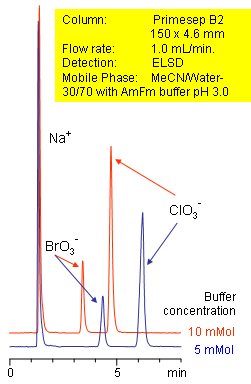
Primesep B2 separates chlorate and bromate by an ion-exchange mechanism. The anion-exchange properties of the column allow retention of hydrophilic compounds, and these properties can be adjusted by simply changing the ammonium formate buffer concentration. The HPLC separation uses a mobile phase of water, acetonitrile (MeCN, ACN) and ammonium formate with evaporative light scattering detection (ELSD).
| Column | Primesep B2, 4.6×150 mm, 5 µm, 100A |
| Mobile Phase | MeCN/H2O – 30/70% |
| Buffer | AmFm pH 3.0 |
| Flow Rate | 1.0 ml/min |
| Detection | CAD |
| Class of Compounds | Ions, Hydrophilic, Ionizable |
| Analyzing Compounds | Sodium Chlorate, Sodium Bromate |
Application Column
Primesep B2
The Primesep family of mixed-mode columns offers a wide variety of stationary phases, boasting unprecedented selectivity in the separation of a broad array of chemical compounds across multiple applications. Corresponding Primesep guard columns, available with all stationary phases, do not require holders. SIELC provides a method development service available to all customers. Inquire about our specially-tailored custom LC-phases for specific separations.
Select optionsChlorate
Sodium Bromate
Sodium Chlorate

